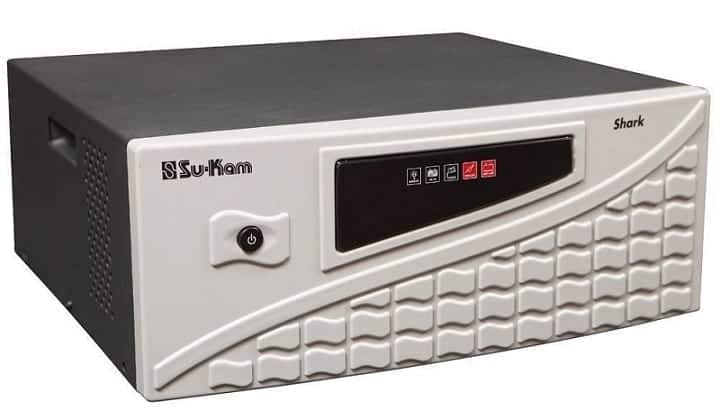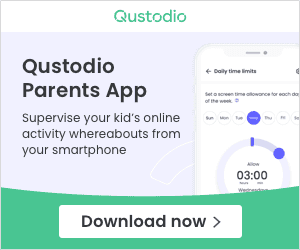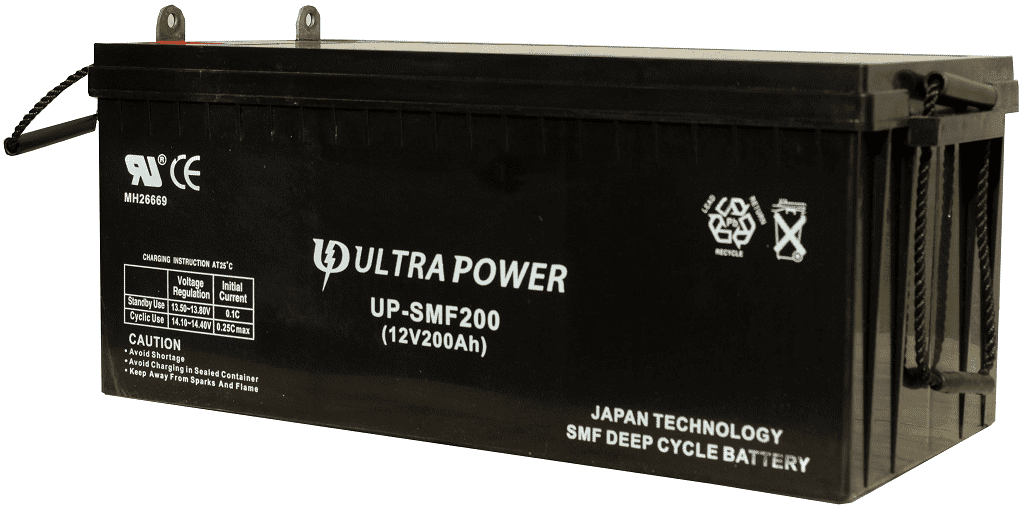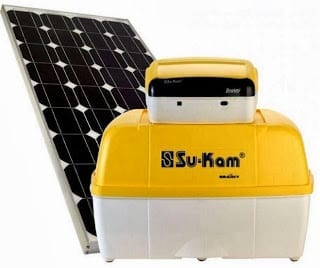Power Inverters are Electronic gadgets that convert energy stored in a battery (or DC voltage) to AC voltage that will power your appliances. Their major selling points are their low noise and emission-free operations as well as their convenience. This article will guide you on how to buy an inverter for backup power in the home or in the office.
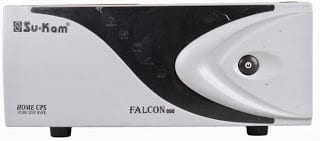
First, Reality Check
The first question to ask yourself is do I actually need an inverter? This question is important because while inverters are alternatives to power generators they are not quite as versatile.
The first challenge for a power inverter is that you need to charge the batteries.
You need electricity to charge the battery of your power inverter. This is a bit problematic if you live in a developing country like Nigeria where public power supply from the grid is not steady.
This means you may not get enough public power supply to charge your battery, which could result in poor performance of the inverter or inability to use the inverter at all. Irregular charging is also bad for your inverter battery.
The ideal person to buy a power inverter is someone who has at least 12 hours of public power supply per day or someone who already has a power generator but wants a noise-free alternative.
For example, I use my power generator during the day (if the power supply becomes epileptic) and use my power inverter at night because it operates at low noise and is night-friendly. The generator also charges the inverter battery while it is on.
If you live in an area with less than 12 hours of public power supply, it will not make a lot of sense to buy an inverter, except if you also have a power generator or you are willing to invest in a solar power system with solar panels.
It is also important to note that a power inverter is more suited for resistive loads like your household and office electronics like TVs, Computers, Printers, lights, etc.
Power Inverters are not best with inductive loads, so if you are going to be operating lots of machines with motors in them, a generator may be better, except you can find an industrial-grade inverter.
Inductive loads like Refrigerators, Freezers, and Air conditioners can be powered by an inverter, just make sure you buy an inverter with high enough capacity and capable of handling their high start currents.
For example, the starting current of a refrigerator could be up to 3 times its current in normal operation. So, a 200w refrigerator could require up to 600w to start. A/Cs are even worse.
Your Power Needs
Once you are sure you need to buy an inverter, the next stage is to calculate your power needs. Simply note the gadgets that you will be operating with the power inverter.
For example, a typical load may be 1 TV set, 1 decoder, 1 DVD player, 1 Fan, 1 Laptop, and 3 light points.
Then note the power ratings of each of the gadgets. You can find the power rating on the back or side of the gadget. You can also check the manual of the gadget. For example for the load above, the rating could be:
- 1 TV set (100w)
- 1 Decoder (20w)
- 1 DVD Player (20w)
- 1 Electric Fan (70w)
- 1 Laptop (20w)
- 3 energy-efficient light points (90w)
- Total Load = 320w
The next step is to get a VA equivalent of the power, which if we assume a power factor of 0.8 gives 400 VA (i.e. 320/0.8)
After calculating your total load, the next step is to derate the power inverter to create some allowance for flexibility and to ensure it does not overwork itself.
To derate, just multiply your total load by 2. In the example above 2 x 400 = 800VA. So, you will buy an inverter with a power rating of 800VA or higher like an 800VA Inverter.
You may also decide to multiply by 3 to give more operation allowance for the Power inverter. Note that the aim of derating is to ensure that your inverter does not operate at full load or near full load, which will ensure the longevity of the device.
Compare Inverter Prices
Type of Battery
You don’t just buy an inverter, you also need to buy an inverter battery as that is where the power inverter derives its energy.
The best battery for your inverter is the SMF deep cycle inverter battery. SMF stands for Sealed, Maintenance Free. Though you can use the normal car battery, but they emit poisonous fumes which could have long term impact on your health. This means an SMF battery can be installed indoors making them very convenient.
Another type of battery to use if you do not mind some maintenance is the tubular battery, which are also deep cycle batteries, but require some maintenance.
They require less maintenance compared to car batteries. Tubular batteries are not advisable for installation indoors as they are not completely sealed and could be emitting gases.
deep cycle batteries last longer than regular car batteries because they are optimised for the loading characteristics of power inverters.
They may cost more, but we recommend you buy an SMF deep cycle battery for your power inverter. If you are looking for cost effectiveness and do not mind some maintenance, go with the tubular deep cycle battery.
Number of Batteries Required
An inverter is usually rated in this pattern X VA/Y V, where X is the rated power output and Y is the input voltage required.
For example, an 800 VA/12 V inverter will give a maximum output power of up to 800 VA and require an input voltage of 12V. Similarly, a 1.5 KVA/24V inverter will output 1.5 KVA (1500 VA) and require 24V input.
Since batteries usually come in 12 volts voltage, the 800 VA/12 V will require a minimum of one 12V battery, while the 1.5KVA/24V inverter will require a minimum of two 12V batteries connected in series.
In the same vein, a 3.5KVA/48V inverter will need a minimum of four 12V batteries. When you buy an inverter, make sure you know the minimum number of batteries required.
What Battery Capacity
Batteries come in different capacities. The higher the capacity, the longer a battery can last before getting discharged, given similar loading.
A 200 Ah (Ampere-Hour) battery is recommended though a 100 Ah or 150 Ah battery can be managed.
For example, for our example load above (400VA), a fully charged 200 Ah battery can theoretically deliver 6 hours of power while a fully charged 100 Ah battery can only manage 3 hours.
Note that these are theoretical values, actual values may be less (as we ignored inverter efficiency and our power factor is assumed).
To increase the capacity and use time, you connect more batteries in parallel or reduce the load on the inverter.
For example, connecting two 200 Ah batteries in parallel will result in a theoretical energy capacity of 400 Ah and increase the theoretical use time to 12 hours. Note that to connect batteries in parallel you must account for the input voltage.
So, a 12V input inverter will require one 12V battery in each parallel set, a 24V input inverter will require two 12V batteries in each parallel set, a 48v input inverter will require four 12V batteries in each parallel set and so on.
Hence, a 48v input inverter will require eight 12v batteries for 2 parallel sets and twelve 12V batteries for 3 parallel sets.
Compare Inverter Battery Prices
Solar Energy Support
Some inverters come with solar energy support. These inverters enable you connect solar panel(s) to your inverter and tap from the free energy of the Sun. This type of inverter is called a Solar Inverter.
The Solar Panel charges your battery ensuring you have enough energy when needed. Depending on the capacity of the Solar panel, it can charge the battery, while still providing power for your appliances. Solar inverters can also charge your batteries via generators or public power supply.
Note that if you do not buy a solar inverter, you can still upgrade a regular inverter for solar energy by buying a solar charge controller.
If you buy a Solar Inverter, you will not need to buy a solar charge controller separately, since they come with solar charge controller built-in.
You will have to buy the solar panels separately. If tapping energy from the sun is important to you, buy a solar inverter outright. However, you can always buy a regular power inverter and upgrade for solar energy anytime you want.
Battery Level Indicator
Although this is more of wishful thinking as a lot of inverters do not seem to have this feature. However, if you can find an inverter with this we recommend it.
An inverter with a battery level indicator will provide you with the relative charge capacity of the battery. This is great for battery management especially if utility power is not reliable.
This will enable you to manually shut down your inverter before the battery gets deeply discharged, which when regular can result in the death of the battery.
Inverter Installation
Except, you have above-average electrical skills, you will need a technician to install your inverter. Thankfully, some retailers and online stores that sell inverters offer options with the installation kit, making installation easier for you or a trained technician.
The installation accessories come from the manufacturer of the inverter which ensures everything works well. When buying an inverter it is always advisable to take up the installation kit.
The cost of the installation kit may be incorporated in the cost of the inverter or you will have to pay separately for it. Make sure you are present to inspect the installation.
Make sure that the cabling connecting the inverter to the battery is as short as possible. This will reduce energy losses.
It is also important to know that a lot of current moves (it could be double or triple digits) from the battery to the inverter, so make sure everything is properly sealed with no naked wires to prevent electrocution.
Installation cost for inverters ranges from 10,000 Naira to 225,000 Naira depending on the complexity of the system.
Compare Inverter System Prices
Inverter Price and Brands
Pricing of inverters for homes and offices ranges from around 250,000 Naira to 9,900,000 Naira depending on power output and level of sophistication.
This does not include the battery. A 12V 100 Ah SMF Battery costs around 130,000 Naira, while a 12V 200 Ah SMF battery starts at around 250,000 Naira. You will need from one to more than eight depending on your setup.
Want to buy an Inverter? Some popular brands in Nigeria include Sukam, Prag, Mercury, CyberPower, Luminious, Tripp Lite, Bluegate, etc.
Where to Buy Power Inverter
You can buy Power Inverters in Nigeria at Jumia, Jiji, Konga, Kara, SIMS, GZ Industrial Supplies, Mercury Direct, and Prag Global.
There goes our guide on how to buy a power inverter, if you have more questions or insight, leave a comment here or engage with us on X or Facebook.


